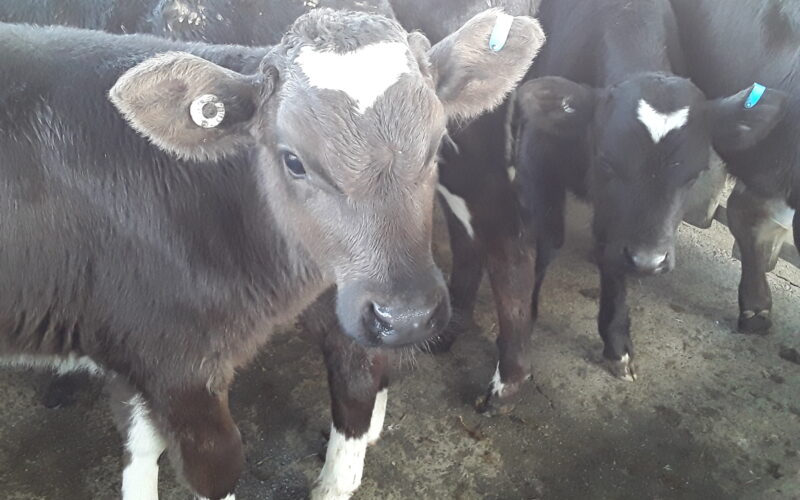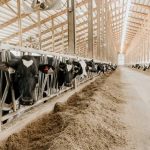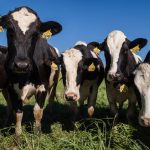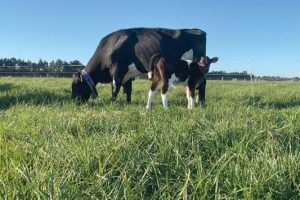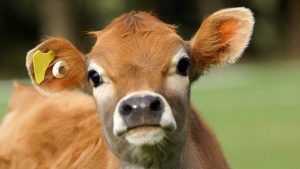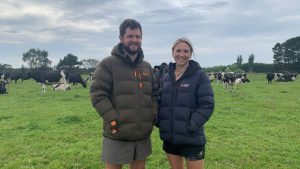
Hunt is on for behaviour changes that would suggest which animals to drench and when.
Activity sensors can detect differences in behaviour between groups of animals infected with gastrointestinal parasites, but new research indicates that more studies are needed to identify changes in calves affected with a worm burden that requires drenching.
The study, published in the New Zealand Veterinary Journal, found that while calves do show small signs of behavioural differences, these differences are not large enough for researchers to be able to confidently say which individual animals are growing more slowly because of their parasite burden.
Long term, it is hoped that by identifying changes in the behaviour of cattle that are negatively affected with parasites, farmers will be able to develop a more targeted approach to drenching, so reducing the build-up of drench resistance.
Currently, many farmers apply drench universally across all of the animals in a mob, but with drench resistance increasingly becoming an issue on cattle farms in New Zealand, a targeted approach to drenching could maintain effective worm control and prevent the spread of anthelmintic resistance.
The study was authored by Andrew Bates, Bowen Fan, Andrew Greer, Racheal Bryant and Amanda Doughty.
Bates said people have been looking at different ways of judging which animals should be drenched and this new research further develops that concept under New Zealand’s pastoral farming system.
“We thought the behaviour of animals that are clinically wormy would be different to animals that are not.
“The rationale was that if you could say that animals that are wormy eat more or less, or lie down more, you could use that knowledge to identify which animals to worm.”
Technological advances including animal monitoring systems and developments in data analysis could make that possible, he said.
To investigate the association between parasites and animal behaviour in dairy calves, they used animal-mounted, accelerometer-based sensors provided by SCR Engineers and distributed by MSD.
The research took 36 Friesian-Jersey 5-6-month-old heifer calves fitted with the sensors to track behaviour, with calves randomly allocated to one of two treatment groups.
Half of the animals were challenged with an oral dose of 20,000 larvae of Ostertagia ostertagi and Cooperia oncophera once a week for three weeks, and half were unchallenged.
Bates said the research showed small and subtle differences in the behaviour between the wormy and control calves.
For an average calf in each group, these differences could be detected at a group level. However, at an individual calf level the result were not as clear cut as they had hoped.
“The drivers of animal behaviour are extremely complicated and at present there don’t seem to be simple measures that, at an individual calf level, say, ‘This is a wormy calf’ or ‘This isn’t a wormy calf’.”
The behaviour of calves will be influenced by the weather, pastoral variations, genetics and variations in response to worm burdens among the animals – two animals affected with the same dose of parasites may not necessarily suffer the same level of disease, he said.
“The things that drive that behaviour can be very multi-faceted, there’s lots of them, they are changing all the time and most of them are outside the farmer’s control.”
However, Bates was confident that sensor and analytical technology would continue to develop and one day it will be used to reliably individually identify parasite-affected animals.
“It’s highly likely that as AI and other data systems develop, the issue of identifying individual animals that are infected andaffected with parasites will be solvable.
“Behavioural changes are real in parasitised animals and it’s a case of refining the technology and developing its accuracy so it’s better able to correctly classify which individual animals are affected, and which are not.”
The study was funded and managed by Vetlife NZ along with funding from the Ministry for Primary Industries’ Sustainable Food and Fibre Futures fund.
Two South Island farmers have launched an online platform, Landify, which helps young farmers looking to get into farm ownership find investors and sellers. Co-founder Sarah How tells Bryan that while the sector has talked about the problem of succession for years there has been relatively few tools developed to deal with the problem.
Federated Farmers is celebrating regulatory changes that exempt those who supply drinking water to fewer than 25 people from costly and time-consuming administration. Its local government spokesperson Sandra Faulkner says the changes are a win for common sense.
Skyrocketing power prices are hitting farmers and processors hard. Senior reporter Richard Rennie says it looks like a challenge that will be here for some time as there’s no obvious fix on the horizon. Meat and dairy processors, orchardists and irrigators are all grappling with the problem and many are looking for efficiencies and ways to trim costs in other areas.
You can now read the most important #news on #eDairyNews #Whatsapp channels!!!
🇺🇸 eDairy News INGLÊS: https://whatsapp.com/channel/0029VaKsjzGDTkJyIN6hcP1K
